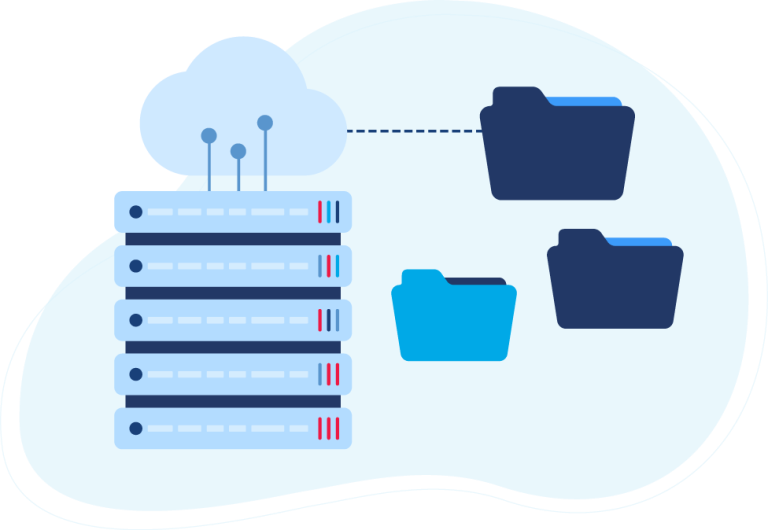In this guide, we walk you through how to scale an eCommerce business without missing a beat, including what is scaling in ecommerce, what makes a scalable online business, and 6 eCommerce operational areas to optimize.
Image Source: Pexels
If you’re running an eCommerce store, chances are you’ve got “growth” listed as one of your main priorities. Unchecked and without proper support, however, growth can cause your business to falter. That’s why it’s important to scale your eCommerce business instead — setting the stage for growth without missing a beat.
What Is Scaling in eCommerce?
In the realm of eCommerce, proper scaling requires that you maximize the efficiency of multiple areas of operation simultaneously. Once your business has achieved its solid plan for profitability, money flowing into your corner without much effort is next in line.
Scaling is what growing enterprise businesses seek to achieve. It means making things grow without working 24/7 to do so, also known as hypergrowth, a phase of rapid expansion businesses experience as they scale.
How to Scale an eCommerce Website In 6 Steps
Becoming a scalable online business is a challenging process but doable and paramount to your success. This guide will cover specific actions you can take to optimize operational areas across your business and scale the right way.
1. Emphasize the Ecommerce Customer Experience
A business is nothing without its customers. Happy customers are the most likely to make repeat purchases. Therefore, whatever plans you have to scale, your business must consider potential impacts on your customers.
You can start by mapping out the journey your customers take. This includes all stages from discovering your brand to making a purchase and receiving their products. Not only will this shed a light on other areas that you should focus on for optimization, but it will remind you of key priorities. Always keep your customers in mind as you make changes in how you do business.
You’ll be able to identify what pain points exist in your eCommerce customer experience and the specific gaps within processes that need to be addressed. For example, learning that customers who abandon a purchase tend to do so at a specific point in the journey might indicate that there’s something deficient within that operational area.
The total number of factors that you can improve with a connection to the customer experience will vary based on your business. That being said, there are some standard elements eCommerce businesses share, and we’ll be highlighting those as we continue.
2. Simplify Your Ecommerce Shipping Procedures
For almost every ecommerce business, shipping is part of the game. As a result, it’s one of the first places you should look to when trying to improve customer satisfaction and grow your business.
Measures like easy-to-navigate check-outs with simplified shipping menus and product return options will go a long way to streamlining delivery, and that’s just the tip of the iceberg. While reviewing your shipping practices, consider the following:
- You can leverage data to better understand where you’re shipping to the most, how much you’re spending, and how you can trim those costs.
- Taking advantage of variable rates between different carriers can also lower costs.
- At the operational level, providing your team with the right information can help them better package and ship orders for increased efficiency.
With just a few tweaks, you can cut shipping costs and improve efficiency — a serious boost for your business.
3. Embrace Data Management, Analytics, and Integration
Data plays a significant role in almost every aspect of your eCommerce business. Learning to manage and analyze data on your customer base and business health, for example, is paramount to enabling business growth.
Data will help you understand your customers better. Learning about their preferences and behaviors can help you adapt your brand offerings to match. Additionally, a strong understanding of data can help you streamline other operations and cut costs across the board, further facilitating your plans to scale up your brand.
Combining practices such as data integration will help you pull together data from disparate sources and bolster your analyses, ensuring you have all the information that you need to make the right business decisions in one place.
4. Improve Your Product Catalog
To maximize efficiency, your product catalog needs to do more than simply present customers with items for purchase. You can optimize the customer experience by updating your catalog.
For instance, if you have a large inventory, laying everything you have out in a mega menu can help keep your offerings organized. But it can become difficult for customers to navigate or so hyper-segmented that customers don’t have the opportunity to discover new products (and potentially make more purchases).
Examine your menus and look for instances where your product catalog might be hampering potential customers’ ability to buy from you. Then, consider an overhaul that will better differentiate categories and ease navigation. All of this while giving visitors to your site a subtle push toward cross-selling and upselling opportunities.
Plus, don’t forget to cleanse bad data, whether that is incomplete or wrong product data. The information contained in your customer database and key fulfillment applications and systems should be as accurate and complete as possible so you need to identify where data is affecting your business.
5. Boost Your Marketing Reach
The art of selling may evolve and ecommerce trends often come and go, but there’s one constant — your business can’t grow if customers don’t know you exist. If you haven’t started already, you can spur on growth by retooling your marketing efforts.
You may, for instance, try taking advantage of more channels to spread your message. Instead of sending out occasional emails, you can expand into social media, content marketing, and digital ad placements for greater reach. Alternatively, if you’ve already got a substantial breadth of marketing channels in play, you might instead try improving their depth.
For instance, you may choose to automate your email marketing efforts and increase the volume of emails you’re sending out. Or you might take the time to better segment your email list so you can better target your messages. Opportunities to refine your marketing techniques abound, so don’t hesitate to start making changes.
6. Upgrade your ecommerce platform and technology stack
Onboarding a solution should go hand-in-hand with a well-thought-out strategy. As your business grows, it’s important to consider how robust and agile to change your eCommerce platform of preference is. This process will likely dictate the success of your business.
Upgrading to SaaS platforms like Shopify, or BigCommerce can add incredible functionality and versatility to your eCommerce store. With a broad range of apps and partners in their ecosystem, Shopify, for example, helps you craft a roadmap to hypergrowth and high volume of sales while saving time and resources.
When it comes to choosing the best eCommerce technologies for your business, identify the right questions to ask when buying eCommerce software. Keep strategy first through it all. Ultimately, your business should strive to partner with a scalable eCommerce platform, an agency that helps you design a beautiful and functional website, a fully developed email marketing program, and an integration partner to seamlessly connect your systems together.
Learn More About The Impact Of Integration
Check out our Integration Toolkit
About the Author:
Beau Peters is a creative professional with a lifetime of experience in service and care. As a manager, he’s learned a slew of tricks of the trade that he enjoys sharing with others who have the same passion and dedication that he brings to his work. When he is not writing, he enjoys reading and trying new things.
 D365 Business Central
D365 Business Central Netsuite
Netsuite



